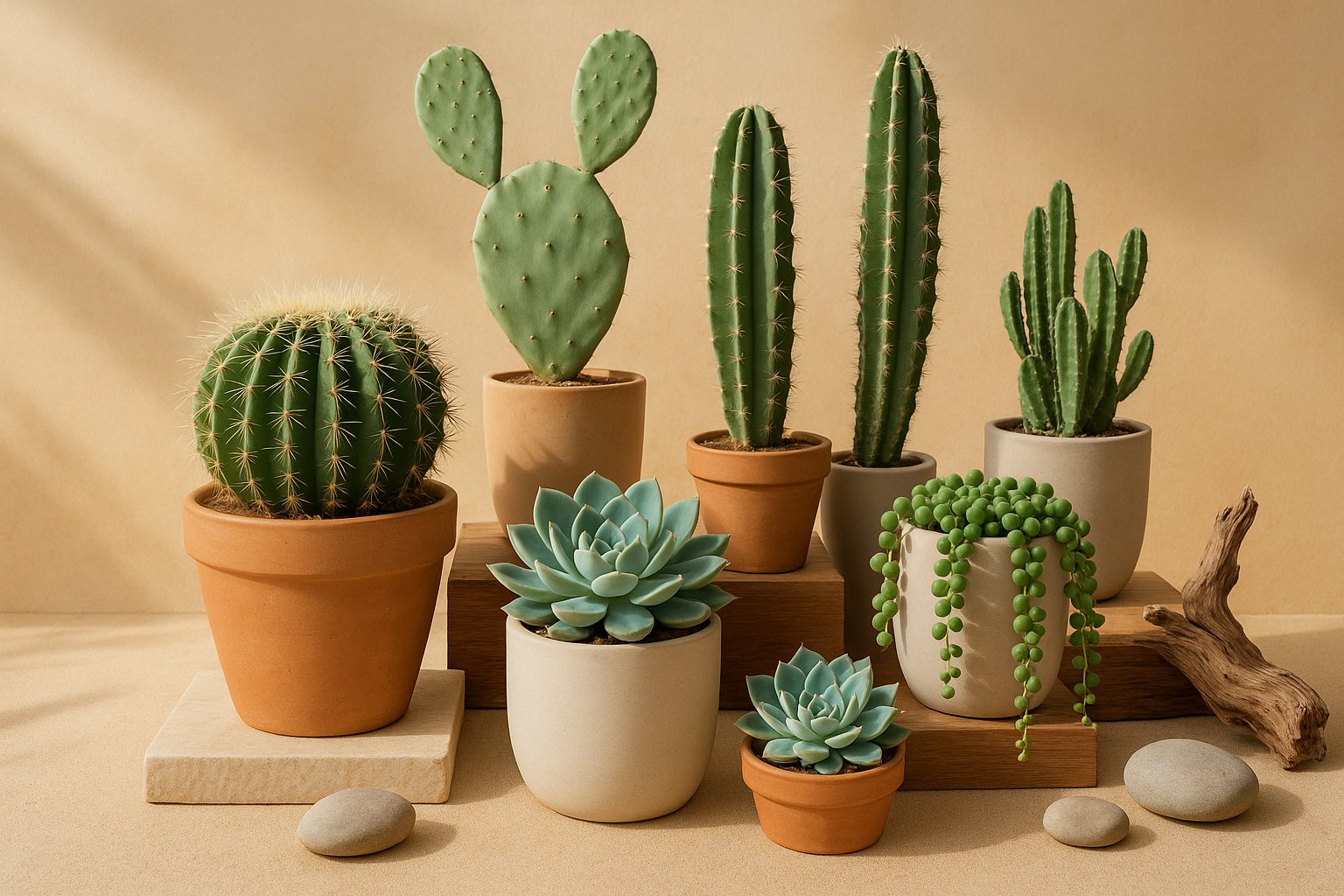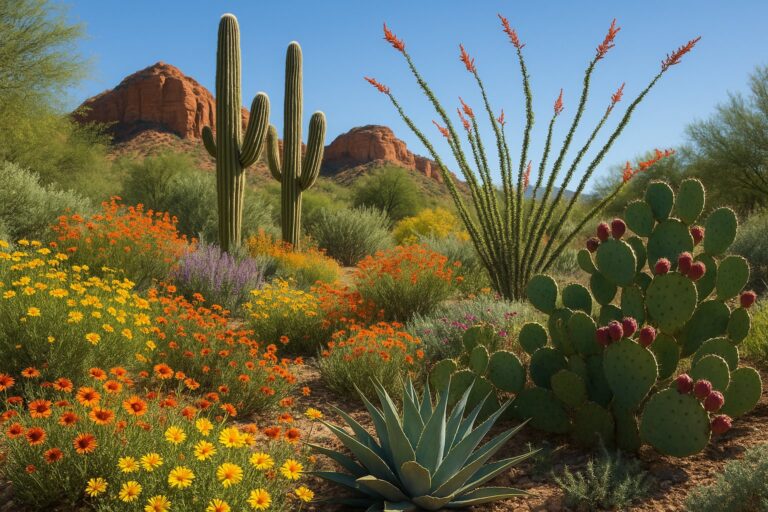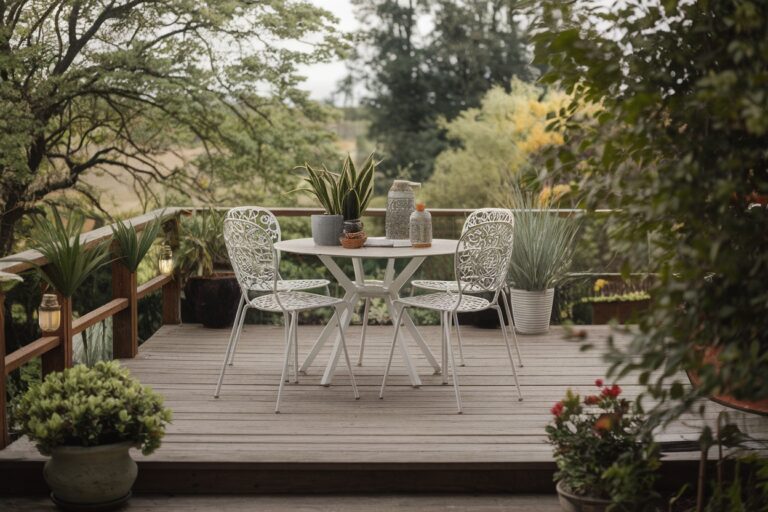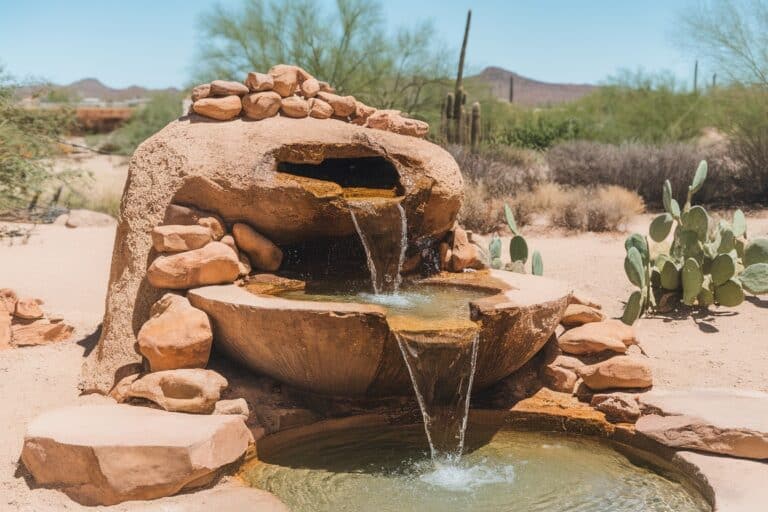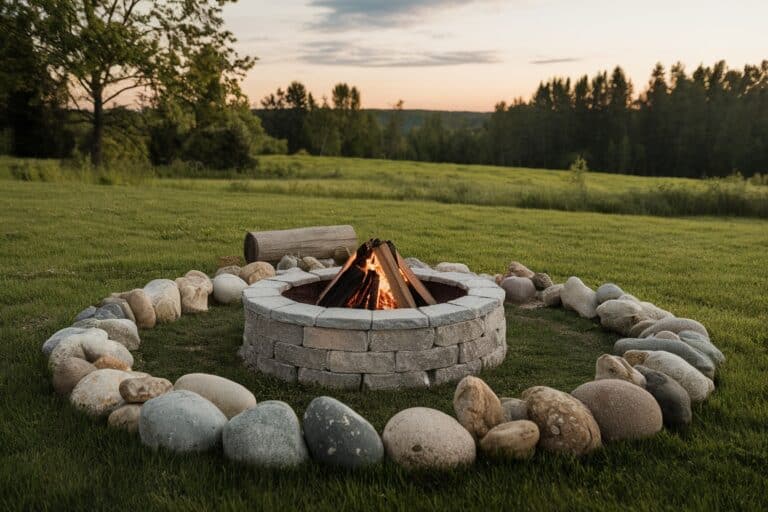13 Elegant Cactus and Succulent Garden Ideas for a Chic Desert Look: Stylish Tips for Modern Outdoor Spaces
Desert gardens can be beautiful, modern, and surprisingly easy to care for. With the right mix of cacti and succulents, you can create a chic outdoor space that stands out all year.
Here are 13 elegant garden ideas to help turn any yard into a stylish, low-maintenance oasis full of unique shapes and textures.
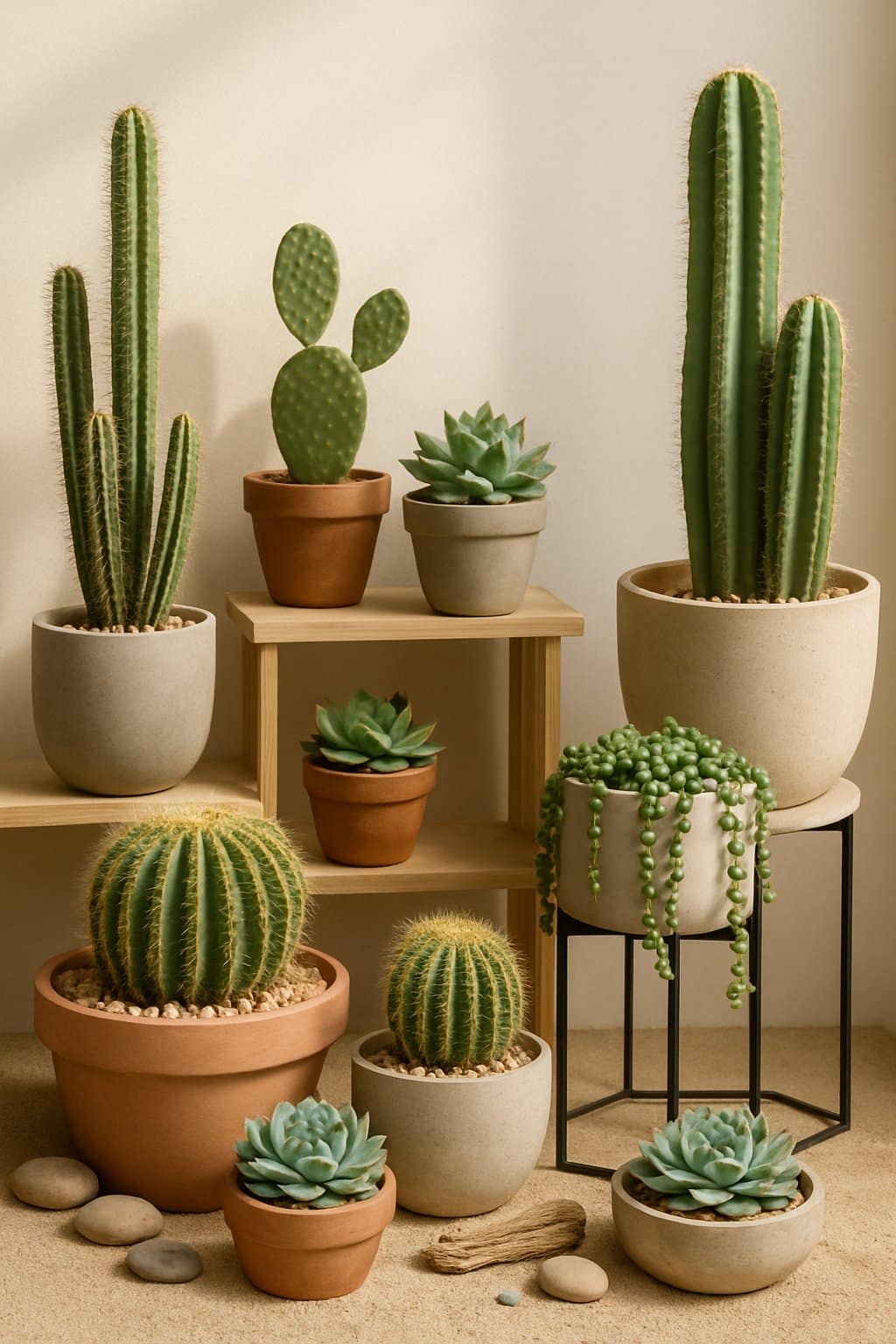
Pairing tall cacti with colorful succulents, creative planters, and stones brings a relaxed yet sophisticated vibe to any landscape. These ideas show that a desert garden doesn’t have to look plain or sparse.
Choosing the right plants and arranging them simply can quickly boost curb appeal and bring a fresh look to your home. Even small city spaces can pull off these cactus and succulent ideas—so don’t worry if you don’t have a huge yard.
You’ll find inspiration for all kinds of settings, from bold front yards to cozy patios, by exploring these creative garden designs.
The Fundamentals of Cactus and Succulent Gardens
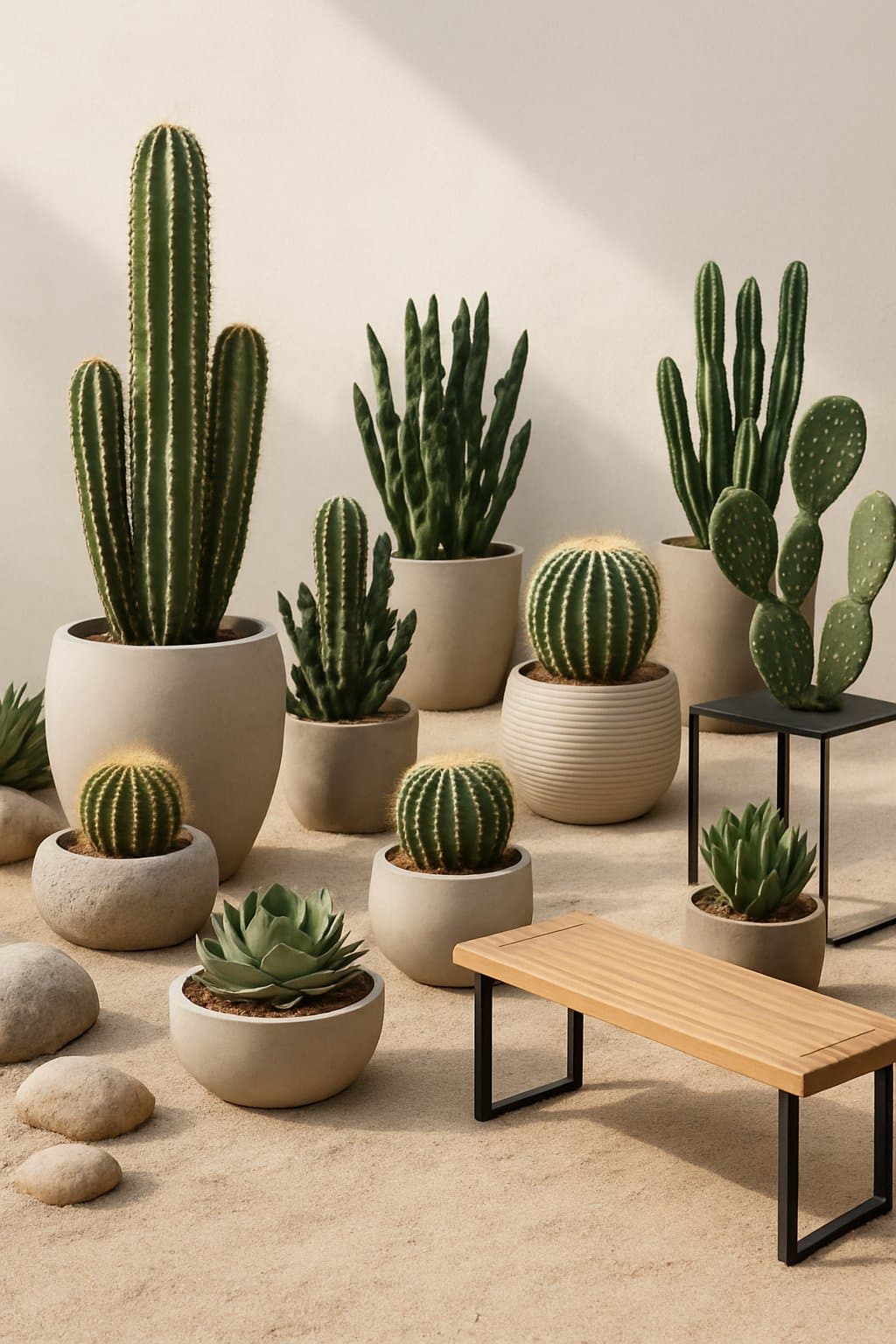
Cactus and succulent gardens thrive when you pick the right plants and give them good conditions. Knowing what your plants need—especially when it comes to soil and drainage—makes all the difference.
Success comes from choosing species that match your climate and style. It’s a bit of research, but totally worth it.
Understanding Succulents and Cacti
Succulents and cacti stand out because they store water in their stems, leaves, or roots. This trick lets them survive in dry, desert-like spots.
All cacti are technically succulents, though not every succulent is a cactus. Cacti usually have spines and come in quirky shapes—think columns or pads.
Many succulents show off thick, fleshy leaves in all kinds of colors and textures. They usually want bright sunlight and dry air, which is pretty convenient.
Some, like agave and aloe, put out impressive flower spikes. Others, such as barrel or prickly pear cactus, bring cool forms and sometimes even edible fruit.
It helps to know these basics before you start grouping plants together.
Essential Soil and Drainage Tips
Well-draining soil is non-negotiable for a healthy cactus or succulent garden. If roots sit in soggy soil, things go south fast.
Mix sand, perlite, pumice, or small gravel into regular potting soil to help water move through. Store-bought cactus and succulent mixes usually do the trick for home gardens.
Drainage matters whether you’re planting in the ground or using containers. Raised beds or planters with holes in the bottom keep water from pooling.
Some people add gravel at the base of pots, but honestly, the soil mix is more important. Check regularly to make sure water isn’t hanging around the roots—nobody wants root rot.
Lots of cactus garden designs offer helpful soil and container tips.
Choosing the Right Cacti and Succulents
Not every cactus or succulent is happy everywhere. Some handle frost, others need it warm all year.
Pick species that match your local conditions. For hot, sunny spots, go for drought tolerant varieties like saguaro, barrel cactus, or jade plant.
Indoors or in shade, zebra plant or sansevieria can work. Flowering cacti like Echinopsis or Mammillaria add color in spring and summer.
Mixing shapes, heights, and textures brings more life to the garden, especially alongside rocks or decorative mulch. Layering tall cacti with trailing succulents gives a lush, full look, as seen in many creative cactus garden ideas.
Always check a plant’s sunlight and water needs before adding it to your garden. It saves headaches later.
Creating a Chic Desert Aesthetic
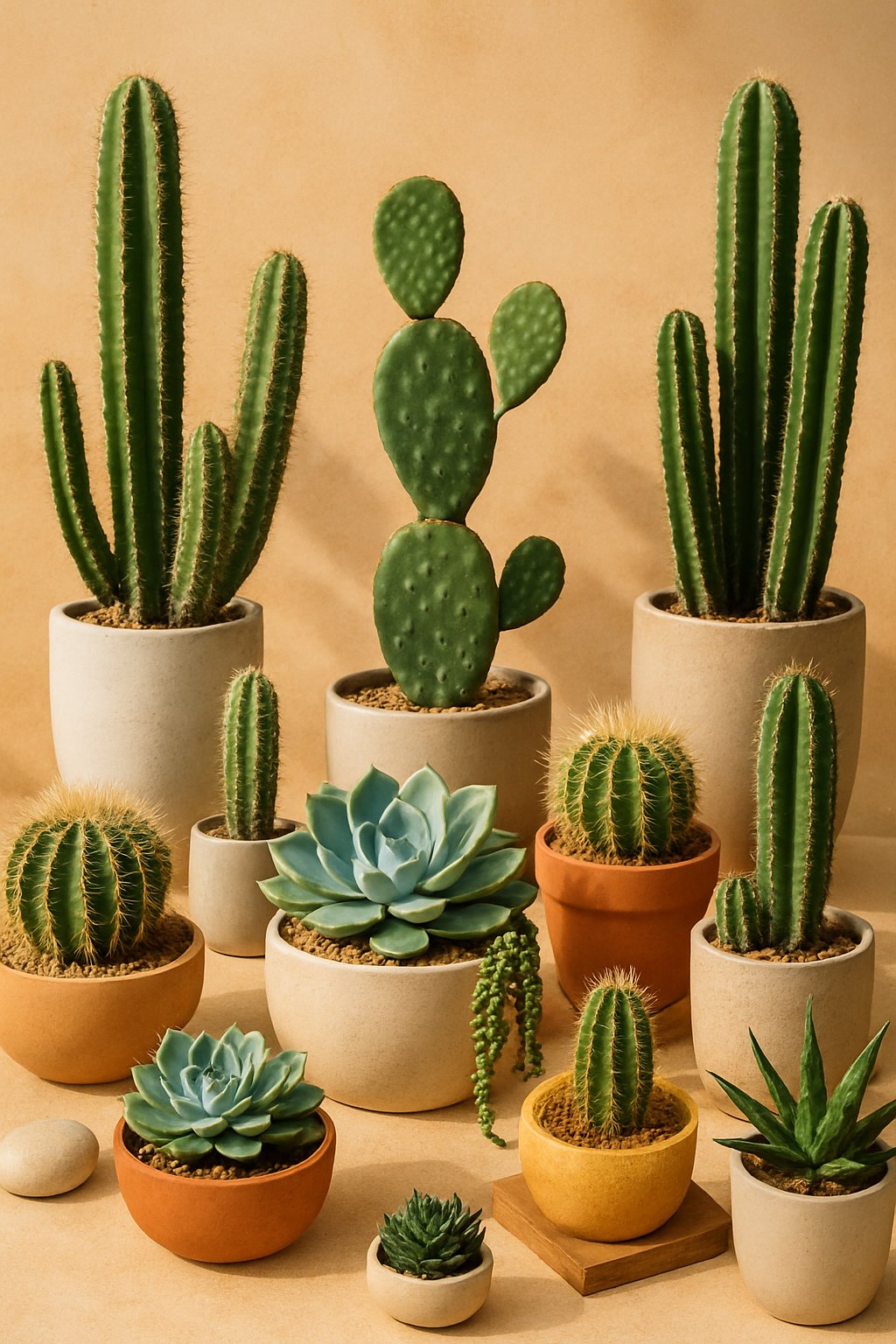
A chic desert aesthetic blends the clean lines of modern design with the wild beauty of a cactus garden. Contrast—shapes, textures, earthy elements—makes each plant pop while still feeling like part of the whole.
Designing for Desert Vibe
Start with the right layout. Clean lines, grouped plants, and simple shapes nail that modern desert look.
Put bold plants like a tall saguaro or big barrel cactus front and center to anchor the space. Geometric stepping stones or concrete pavers drive home the desert vibe.
Keep garden beds defined and uncluttered. Minimal, modern seating creates a spot to kick back and enjoy.
Neutral-toned planters—terracotta, gray, white—add understated elegance. Good lighting highlights the sculptural shapes of cacti and succulents after dark.
Need ideas? Take a peek at these cactus garden ideas for more design inspiration.
Incorporating Rocks, Gravel, and Sand
A chic desert garden leans on rocks, decorative gravel, and sand to set the mood. These hardscapes contrast with the soft forms of succulents and cacti.
Gravel paths or mulched areas add texture and help with drainage. Mixing up the size and shape of rocks—from chunky boulders to tiny pebbles—keeps things interesting.
A well-planned rock garden with sandy patches gives off real desert energy and helps control weeds.
Try this combo:
- Large boulders for structure
- Decorative gravel for ground cover
- Fine sand to fill gaps and soften paths
Arrange rocks in loose clusters, not rigid lines, for a relaxed feel. For more on this style, check out desert garden designs that feature gravel, sand, and rocks.
Balancing Textures and Colors
Mixing textures and colors is what really makes a desert garden shine. Spiky, round, and trailing forms layer together for a dynamic, lively look.
Pair tall cacti with shorter, spreading succulents for balance and depth. Colorful options like red echeveria, blue agave, or golden barrel cactus bring in pops of color without being too much.
Mix matte and shiny leaves for extra dimension. Try grouping by:
- Height (tall, medium, low)
- Texture (smooth, spiky, soft)
- Color (greens, blues, pinks, purples)
Keep plant groups loose, not jam-packed, for a natural vibe. Want to see how this works? Have a look at backyard cactus garden ideas that play with color and form.
13 Elegant Cactus and Succulent Garden Ideas
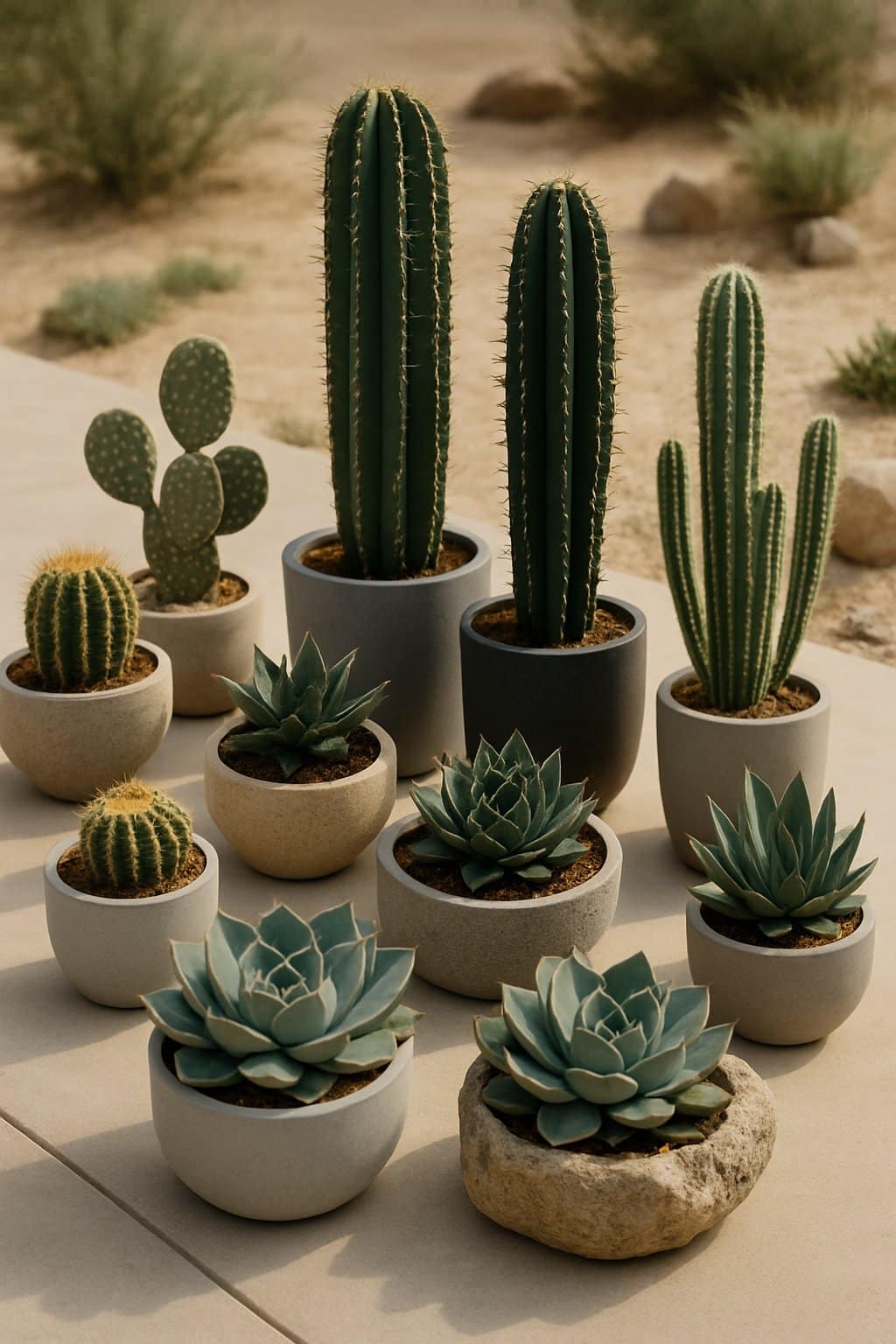
Cactus and succulent gardens bring charm, texture, and color outside. They’re easy to care for and fit all sorts of designs, from zen retreats to modern patios.
Modern Zen Garden
A Modern Zen Garden uses clean lines and open space. It usually features just a few types of plants, keeping things calm and organized.
Large stones, gravel, and sand set a peaceful foundation. Group cacti and succulents in small clusters for a relaxed look.
Line a path with columnar cacti or agaves for structure. Toss in a water bowl or a small statue for a tranquil touch.
Pick plants with cool shapes, like golden barrel cactus or blue chalk sticks. They love full sun, and spaced planting gives them room to thrive.
Black or gray pebbles help their colors stand out. The Modern Zen Garden is simple but packs a visual punch—a quiet spot to unwind.
Sculptural Focal Points
Focal points grab attention and add drama. Plant a single large cactus, like a saguaro or organ pipe, to act as a living sculpture.
In smaller gardens, use an oversized container with a bold agave or a cluster of smaller cacti as a centerpiece. Contrasting stones or groundcovers can draw the eye to your feature.
Go for unique shapes: paddle-like prickly pear leaves or the twisted spiral aloe. Their forms stay interesting year-round, flowers or not.
This guide to using cactus as landscape focal points has more ideas if you want to see what others have done.
Lighting at the base of your focal plant creates cool shadows in the evening. Focal points give your garden its own personality.
Pathway Accents
Cactus and succulent borders look great along garden paths. Low-growing succulents like sedum or echeveria soften the edges of stone or gravel walkways.
Medium-sized cacti add structure and help define the path. When planting near a walkway, think about safety—choose thornless or small-spined varieties close to the edge.
In sandy or rocky paths, tuck succulents between larger rocks to break up flat surfaces. Toss in flowering succulents or brightly colored rocks for a little extra flair.
More pathway cactus and succulent ideas can help you find your own style.
Stamped concrete or wood plank paths look great with green rosettes and small barrel cacti. Pathway accents guide movement and tie everything together.
Container Cactus Gardens
Container cactus gardens work on patios, decks, even tiny yards. Mix tall and short cacti with trailing succulents for a layered look.
Use all sorts of pots: big tubs for dramatic agaves, little bowls for clusters of hedgehog cactus. Move arrangements around or bring them inside in winter—super flexible.
Good drainage is a must. Use cactus soil mixes and pots with holes. Top the soil with bright stone mulch to reflect light and keep roots cool.
Check out these container garden ideas for creative ways to reuse old dishes, birdbaths, or even driftwood. Container gardens make it easy to enjoy a desert vibe, even if you’re short on space.
Maximizing Height, Depth, and Dimension

A cactus and succulent garden really comes alive when you mix tall, dramatic forms with gentle ground layers. Playing with elevation and pairing different plants gives the whole space a dynamic, curated feel.
Showcasing Tall and Architectural Cacti
Tall cacti just grab your attention in any garden. The saguaro and organ pipe cactus, for example, stand upright and have a striking presence you can’t miss.
Put these big guys in the middle or at the back of a bed—they’ll naturally pull your gaze upward and become a bold focal point. Saguaros, with their branching arms and crazy heights, instantly give gardens that classic desert vibe.
Barrel cacti and golden barrels work well at the base of the tall ones. Their round shapes break up the lines and add some needed contrast.
Try placing a few upright columns behind or between groups of medium-sized cacti. You’ll get a layered look that feels lush and a bit more intentional. You’ll see this trick in plenty of cactus garden ideas if you’re after that desert-inspired style.
Layering with Smaller Cacti and Ground Covers
Smaller cacti—like the bunny ear cactus—fit perfectly at the front edge of a bed. They’re low enough to let the taller plants shine.
Mix in some small succulents to create texture and keep things interesting at ground level. Sedum, ice plant, and stonecrop do a great job filling gaps and covering bare soil.
Varying plant heights keeps the garden from looking flat. It’s also a sneaky way to show off all those weird shapes and colors.
A thoughtful mix of ground covers and small cacti saves water and keeps the garden looking full. Grouping plants in clusters or loose patterns helps tie everything together, so the whole space feels connected. If you want more ideas, check out these cactus and succulent garden tips.
Enhancing Beauty with Pops of Color and Blooms

Bright colors and bold cactus blooms can totally change the vibe of a garden. Cacti and succulents come in so many shapes and shades, so you’ve got a lot of room to show off your style.
Planting Colorful Succulents
Colorful succulents always liven things up. Echeveria, sedum, and some aloes have leaves in reds, blues, pinks, and purples.
Group them together and you’ll get those natural “pops of color” that look so good against gravel or rocks. Try arranging them in geometric patterns or mixing up the colors for a playful effect.
Even a simple row of differently colored echeveria along a walkway looks great. Mix low, blue chalk sticks with taller plants or rosette succulents if you want more variety.
Most of these plants are tough and don’t ask for much—just sun and well-draining soil. That means you can have color without a ton of work.
Encouraging Cactus Blooms
Cactus flowers can turn your garden into a temporary explosion of color. Different cacti offer blooms in yellow, pink, red, orange, or white. Prickly pear and hedgehog cactus are especially famous for their showy flowers.
To get more blooms, make sure your cacti get enough sun and don’t drown them with water. They like to dry out between drinks, especially in winter. Give them a little cactus fertilizer in spring and let them rest in cooler months.
Some cacti won’t bloom for years, which can be a little frustrating, but the payoff is worth it when those flowers finally show up. Cactus blooms attract pollinators too, which is always a win.
Showcasing Vibrant Blooms and Accents
Bright pots, painted rocks, or quirky garden art can make those blooms stand out even more. Place colorful succulents like echeveria or blooming aloe where the sun hits them best—they’ll show off their colors like crazy.
Try these accent ideas:
- Use bold ceramic pots for small succulent groups
- Lay down colored gravel or tumbled glass around beds
- Paint pathways to draw attention to blooming spots
- Border beds with succulents that have strong leaf colors, like red sedum
Share your best combos online—Pinterest boards with succulent landscaping ideas are full of inspiration and might spark something new for your own garden.
Creative Edging, Pathways, and Hardscape Features
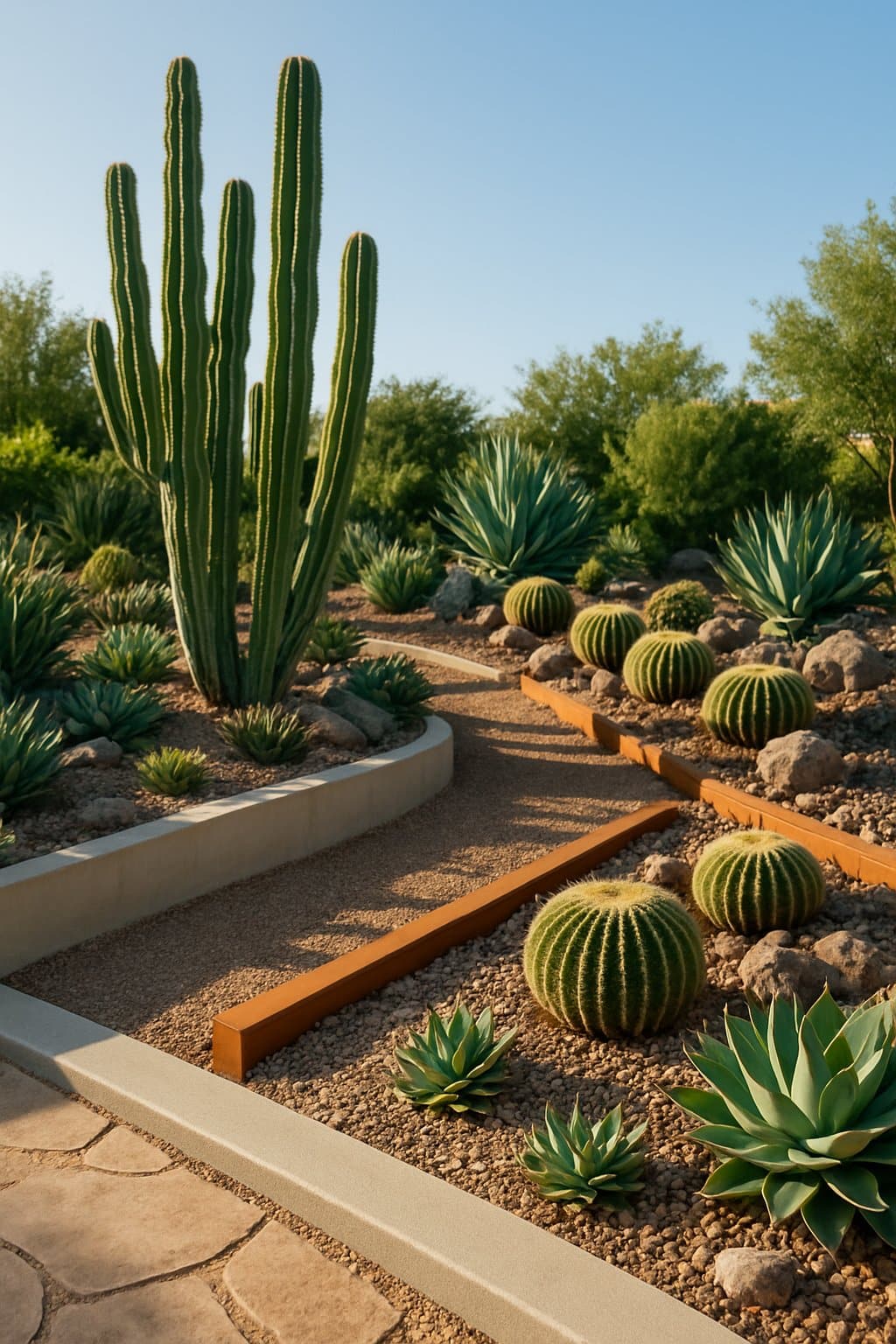
Details like stone borders, curvy paths, and even tiny water features can make a cactus or succulent garden feel more finished. These elements add structure, define spaces, and bring a little extra desert beauty to the mix.
Defining Borders with Rocks and Gravel
Rocks and gravel outline garden beds and keep things tidy. Big stones—river rock or granite—work as natural barriers and hold soil in place. Crushed gravel looks neat, is easy to care for, and helps with water drainage.
Mix up stone sizes for more texture. Dark lava rocks can make green succulents pop, while light gravel brightens everything. These borders also cut down on weeds, so you spend less time pulling and more time enjoying.
Want more ideas? See how boulders and pebbles shape beds in modern cactus gardens. Try curving your rock borders or going geometric for something a bit different.
Innovative Desert Garden Pathways
Pathways aren’t just for walking—they’re a design feature too. Stone pavers, flagstone, and decomposed granite look natural in a desert garden. Leave gaps between pavers so groundcovers or teeny succulents can peek through.
A winding path keeps things interesting and invites you to wander. Add solar lights or lanterns for a cozy glow at night. Some folks use colored gravel or stone to create patterns, making each step a little adventure.
Edge your path with low cacti or spiky agaves for structure and a bit of foot-traffic protection. For more on this, check out stunning pathways using stone kits and garden edging.
Integrating Water Features and Oasis Elements
Even a tiny water feature can add a surprising twist to a dry garden. Fountains, small ponds, or bubbling urns become instant focal points among rocks and cacti.
Put water elements near shady benches or seating spots so you actually get to enjoy them. Surround the base with smooth stones or low succulents for a neat look and good drainage. If you’re worried about water, try reflective pebbles or glass mulch for a similar vibe.
Mixing hardscape, water, and greenery turns a cactus garden into a peaceful retreat. There’s something about the sound of water that just makes the space feel calm.
Caring for Your Chic Desert Garden
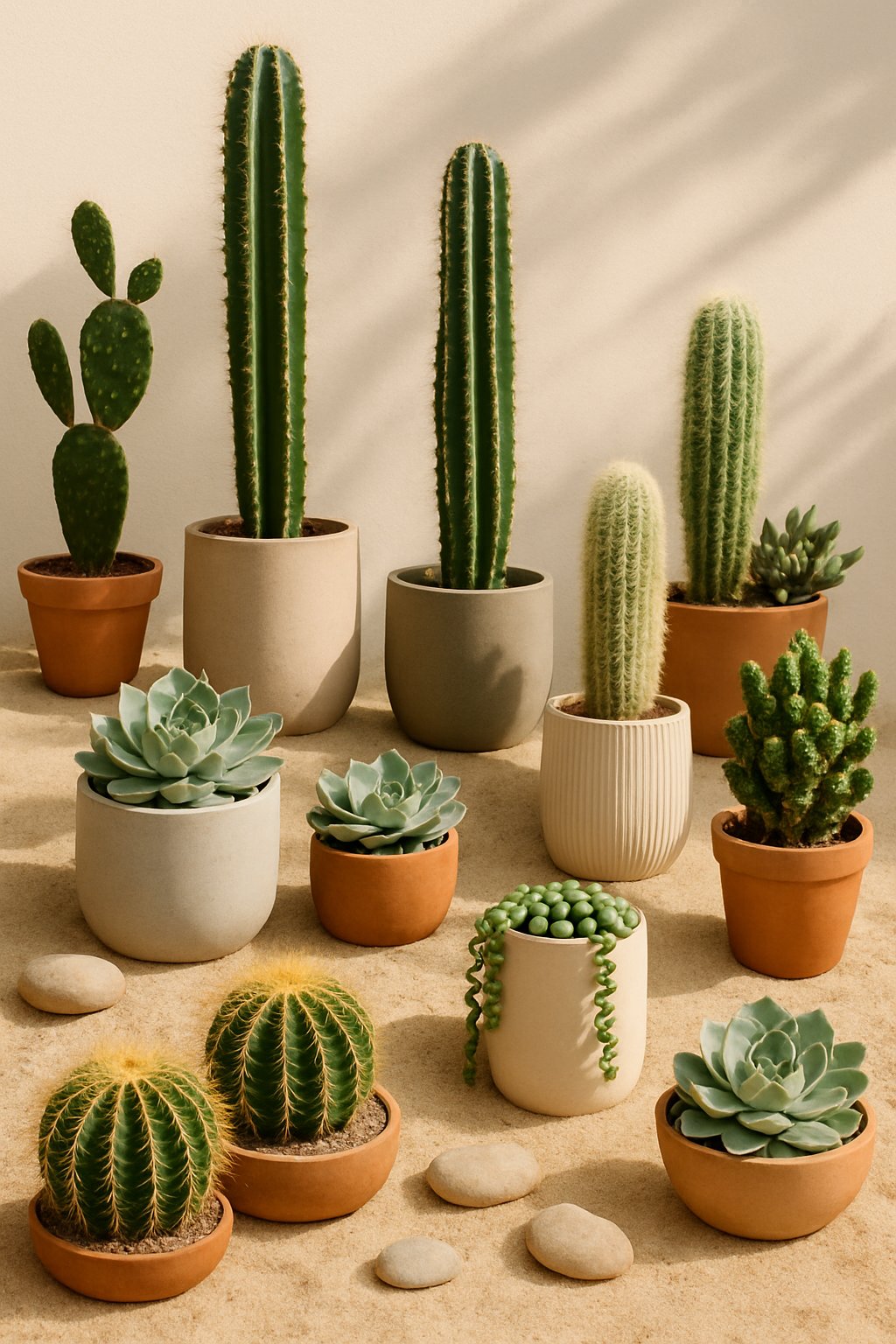
Caring for a desert garden isn’t rocket science. Cacti and succulents love sunlight and don’t need much water, but a little routine care keeps them looking sharp year-round.
Water Needs and Drought Tolerance
Cacti and most succulents are famous for surviving dry spells. They store water in their thick leaves and stems, so you don’t have to water them much.
Water deeply, then let the soil dry out completely before you go again. In hot weather, that’s usually once every two weeks, and in cooler months, maybe just monthly.
Pick drought-tolerant plants that fit your climate. Agave and aloe are both easy and forgiving. Make sure your soil drains well—raised beds or sandy mixes are perfect for these plants.
Sunlight and Placement
Most desert plants want full sun—at least six hours a day. South-facing spots are best, but strong light from the east or west can work too.
Ease new plants into bright light slowly, especially the smaller ones. Sudden sun can burn them, which is just annoying.
If you’re gardening on a balcony or patio, group plants by their sunlight needs. Tall cacti in the back, low succulents in front—classic, but it works. Need a visual? Check out some cactus garden landscaping ideas.
Cactus Care and Maintenance
Caring for cacti and succulents is pretty straightforward. Pull off dead leaves or petals so things don’t get messy or diseased. Use gloves or tongs for the spiky ones—trust me.
Fertilize in spring with a weak, low-nitrogen liquid fertilizer. Don’t overdo it—these plants don’t need much.
Watch for pests like spider mites or scale insects. If you spot tiny dots or cottony bits, dab them with rubbing alcohol or rinse the area with water. Even the toughest plants appreciate a little TLC now and then. More tips? Check out these cactus and succulent ideas.
Going Green: Sustainable and Low-Maintenance Gardening

Cactus and succulent gardens make it easy to have a good-looking space that doesn’t use a ton of water or require constant fussing. They’re a great fit if you like eco-friendly gardening—or if you just want to spend less time working and more time enjoying your yard.
Sustainable Gardening Practices
When you pick cactus and succulents for your garden, you’re already leaning into sustainable gardening. These plants are drought-tolerant and honestly don’t mind if you forget to water them for a while.
If you stick with native or adapted species, you’re helping protect the local desert ecosystem. That also means you’ll have less trouble with invasive plants sneaking in.
You can cut down on waste by using organic mulch and compost. Mulch keeps soil moist and roots cool.
Compost brings nutrients to the soil, no synthetic fertilizers needed. That’s a win for both your plants and the planet.
Tips for Sustainable Cactus and Succulent Gardens:
- Go for native cactus and low-water succulents
- Toss on mulch and compost for better soil health
- Find spots with just the right amount of sunlight
If you switch to manual watering or drip irrigation, you’ll save a lot of water. Just a bit of regular upkeep—like removing debris and watching for pests—keeps things healthy, no chemicals necessary.
Embracing Xeriscaping for Water Efficiency
Xeriscaping flips the script on traditional landscaping by focusing on dry, desert-friendly plants. You get a yard that barely needs watering or fuss, which is perfect if you’re into cactus and succulent gardens.
This style really shines in drought-prone regions. Gravel, rocks, and sand fill in the gaps and help prevent water loss.
Grouping plants with similar water needs makes irrigation way more efficient. Why water everything the same when you don’t have to?
With xeriscaping, you can seriously cut your water use and still have a green, inviting space. It’s a nice blend of practicality and style.
Mixing xeriscaping with cactus and succulents creates a low-maintenance garden that’s both modern and easy to care for. The result? Your garden stays fresh and maybe even a little ahead of the curve all year.
Complementing Cactus Gardens with Companion Plants

Pairing cactus with the right companion plants adds color, texture, and a sense of balance to any desert-themed garden. If you choose plants that love dry conditions too, you’ll end up with a landscape that’s both beautiful and—let’s be honest—pretty easy to manage.
Selecting Perfect Companion Plants
When you’re picking companion plants, look for species that can handle the same dryness and sun as most cacti. Succulents like agave, echeveria, and aloe just fit right in.
They all share similar water needs and don’t wilt in strong sunlight. Desert wildflowers can bring bursts of color around your cacti.
Try desert marigold, penstemon, or red yucca for a bold, vibrant look. If you add tough grasses like blue fescue or muhly grass, your garden gets a little movement and depth.
Skip plants that love water—they’ll just cause trouble and might even rot your cacti’s roots. If you want more inspiration, check out these plants that pair well with cactus.
Creating Visual Harmony
When you mix different cactus shapes with a variety of plant textures, you get a design that’s just more interesting. Tall columnar cacti work nicely as a backdrop for low-growing succulents or even a patch of flowering ground cover.
Try grouping your plants in odd numbers and at different heights. It usually feels more natural, less like you measured everything with a ruler.
Give each plant a little breathing room—nobody likes to feel crowded, not even cacti. That space lets every shape and color actually stand out.
Toss in some rocks, gravel, or even a layer of sand as ground cover. It highlights the cactus and their companion plants in a way that’s honestly pretty striking.
Dark lava rocks especially make green or silvery cacti and succulents look extra bold. Want more ideas? Check out these cactus garden landscaping tips.

